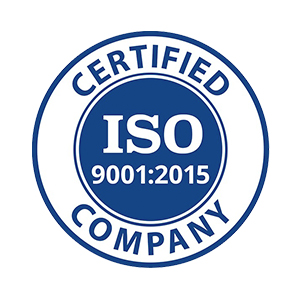🌍 Overview:
Program-Ace is a global software development service provider, delivering tailored solutions for diverse business sectors since 1992. With our seasoned team of developers and artists, we have successfully brought to life over 900 projects using cutting-edge technologies.
📧 Connect with us: If you have a project and are seeking expert consultation and a dependable development partner, don't hesitate to reach out at [email protected].
Focus Areas
Service Focus
- Mobile App Development
- AR & VR Development
- Web Development
- Software Development
- E-commerce Development
Client Focus
- Medium Business
- Small Business
- Large Business
Industry Focus
- Business Services
- Information Technology
- Advertising & Marketing
Program-Ace Executive Interview

Currently my role in the company is to be a guiding light, charting new vectors of development, business plans, and policies for the business. I work closely with heads of departments to deliver on the projects that our company undertakes and encourage further growth of the business.
Furthermore, our broad expertise and long history on the market give us a leg up over most competitors. Our developers are well-versed in building software for a variety of industries and niche specifications.
One of our biggest strengths is certainly our team of Unity specialists, which is one of the largest on the market. Unity is increasingly gaining prominence not only as a game engine, but also as a great resource for enterprise applications. With official certification and years of experience, our specialists know Unity like very few others.
On top of that, we have an assigned Project Manager associated with all company departments and capable of structuring the development process from conceptualization to release.
Gaming & Entertainment, Education, HealthCare, Media Production, Retail, Manufacturing, Automotive.
- The complexity of the app functions
- The amount of content and features, and their complexity
- The business logic behind the app
- Integration of external services
- The difficulty of implementing the desired design
We focus a lot more on the stages of planning and building architecture. While code is being written, we also create reliable, scalable, and secure systems that will allow the service to operate smoothly even as its complexity and user base grows. This approach is ingrained into our company processes and work methodology.
- Budget (which determines the feasibility of a native or cross-platform app)
- Timeframes
- Customer needs
In many cases, the customer still needs to release something for most platforms, as nearly all countries have platform segmentation (in the context of B2C). The question that comes up here is whether to build 2 native applications (one for each platform) or one cross-platform app. We also take into account time frames and budget. Thus, if a client has a limited budget but still wants to release on several platforms, we will suggest a cross-platform application based on Unity or React Native instead of separate native apps.
Since the idea is formulated at this point, it means that the customer wants to create an MVP or prototype. We often suggest Unity for the development of these things, but are also fully capable of building on any other platform (Unreal Engine, Vuforia, ARKit, etc.).
In regards to Native or Hybrid, we recommend native for applications with complex features and requiring strong performance. Nevertheless, not all clients want to invest in expensive native apps or even need complex features, so hybrid apps are best for them. These are more affordable and great for simple apps without HD graphics or intensive performance needs.
● The complexity of the app functionality
● Whether the app is native, hybrid, or cross-platform
● Which platforms the app will be developed for
● Required features and technologies
● Design peculiarities
● The complexity of the business logic and what the app will integrate with (such as API).
● Plans for future development and scaling of the app (must be known for architecture choices)
Traditionally, when a client approaches us with an idea for an application, we suggest creating an SRS for them, after which it will be possible to provide a fixed price for the project.
Our supported pricing models are:
● Fixed price
● Time & material
● Dedicated team
● Mixed model
2. How is the application unique, and why will users want to pay full price for it?
3. Will the business model allow implementing additional paid content into the application?
4. Are there plans to provide permanent support for the application and add new content in the future?
Based on the answers, application type, business logic, and other factors, we offer one of the following models:
1. A free app with advertisements
This model makes it easy to attract a large user base, making it perfect for games and apps with quick interactions.
2. A paid app
This model is most suitable for unique services with an established reputation, and brings in the most stable revenue.
3. A free-to-play app with optional microtransactions
Users appreciate the ability to select which additional services they want to pay for, and this is most suitable for games and apps with advanced and costly supplemental features.
4. A freemium app (free gameplay with a paywall)
The freemium model allows users to try out the service before paying for a full version. If the application is good, its owners should enjoy stable revenue.
5. A subscription-based app
Subscriptions also allow for trying out a service, with revenue climbing steadily as more users sign on with time.
Program-Ace Clients & Portfolios
Key Clients
- Unity
- Epic Games
- Wargaming
- GSN Games
- Namco
- Bigpoint
- Hopster
- MAGRABi
- Sany Group
- Flying Wild Hog








Program-Ace Reviews
- All Services
- Mobile App Development
- Web Development
- Relevance
- Most Recent
- Rating: high to low
- Rating: low to high
Highly productive and competent 3D artists.
Review Summary
They were always quick to turn around new and updated models and get them to the premium realistic look we're after.
What was the project name that you have worked with Program-Ace?
Highly productive and competent 3D artists
What service was provided as part of the project?
Web Development
What is it about the company that you appreciate the most?
The quick turnaround and high quality of work.
What was it about the company that you didn't like which they should do better?
Nothing much.

Proactively gave suggestions & reasonable pricing.
Review Summary
We have done multiple projects with ProgramAce. They have developed a web-based portal for our online news portal which majorly focuses on IT news. They have also built mobile application supporting Android & iOS platforms along with another web portal which serves the purpose of download engine. We would rate them pretty highly, they are very supportive. They know how to deliver the quality project within the pre-decided budget. They always gave us suggestions to improve the functionality of our project.
What was the project name that you have worked with Program-Ace?
Multiple Projects For An Online News Portal
What service was provided as part of the project?
Mobile App Development, Web Development
What is it about the company that you appreciate the most?
<p>They are a great combination of reasonable price and reliability. They pay attention and stick to the scope of the project very well. </p>
What was it about the company that you didn't like which they should do better?
<p>We have done a lot of projects with them and till now we have no complaints.</p>

Happy with the solution offered.
Review Summary
The client is a web development company, iElement B.V. based out of Alexandria. The client aims to build an online dating cum travel assistance and advice portal that connects people from different countries. Program-Ace is selected to offer development of a web-based application called GloboGirls and also handled the backend and website maintenance.
The client is very satisfied with the services of Program-Ace and praised them for their development skills. The client highly recommends them to colleagues.
What was the project name that you have worked with Program-Ace?
GloboGirls
What service was provided as part of the project?
Web Development









